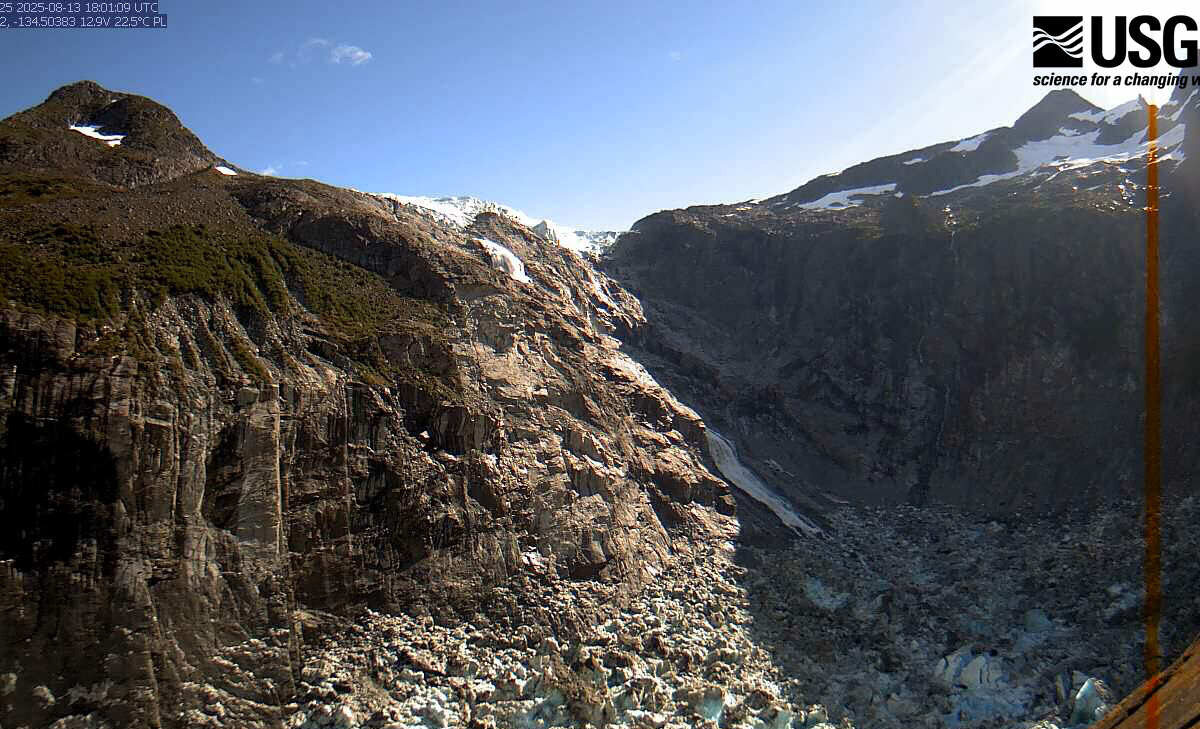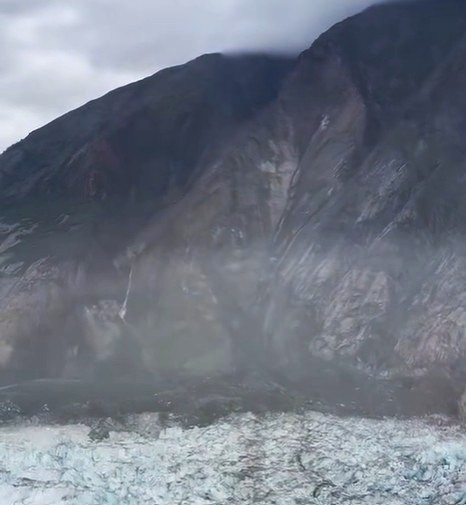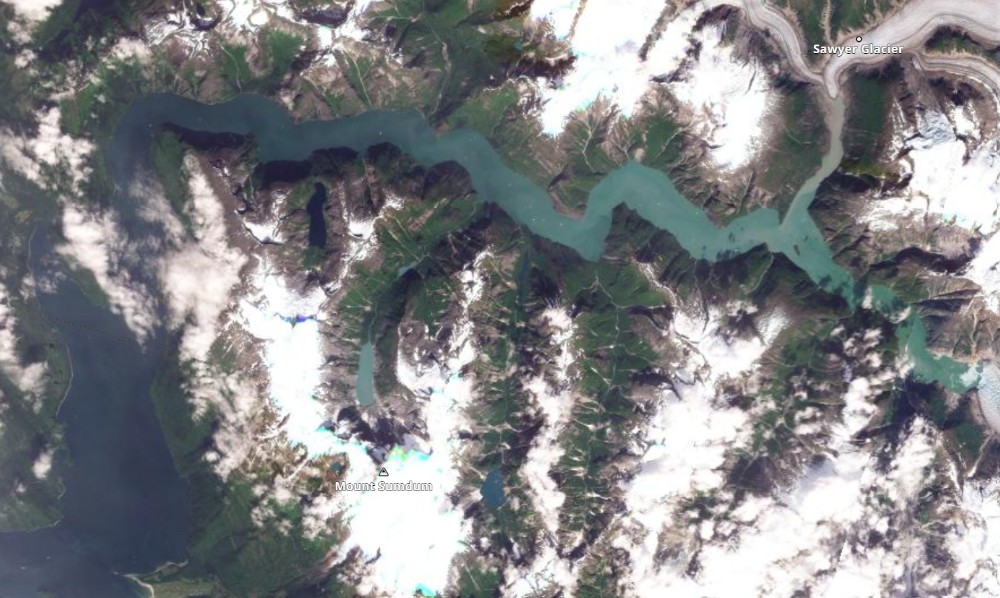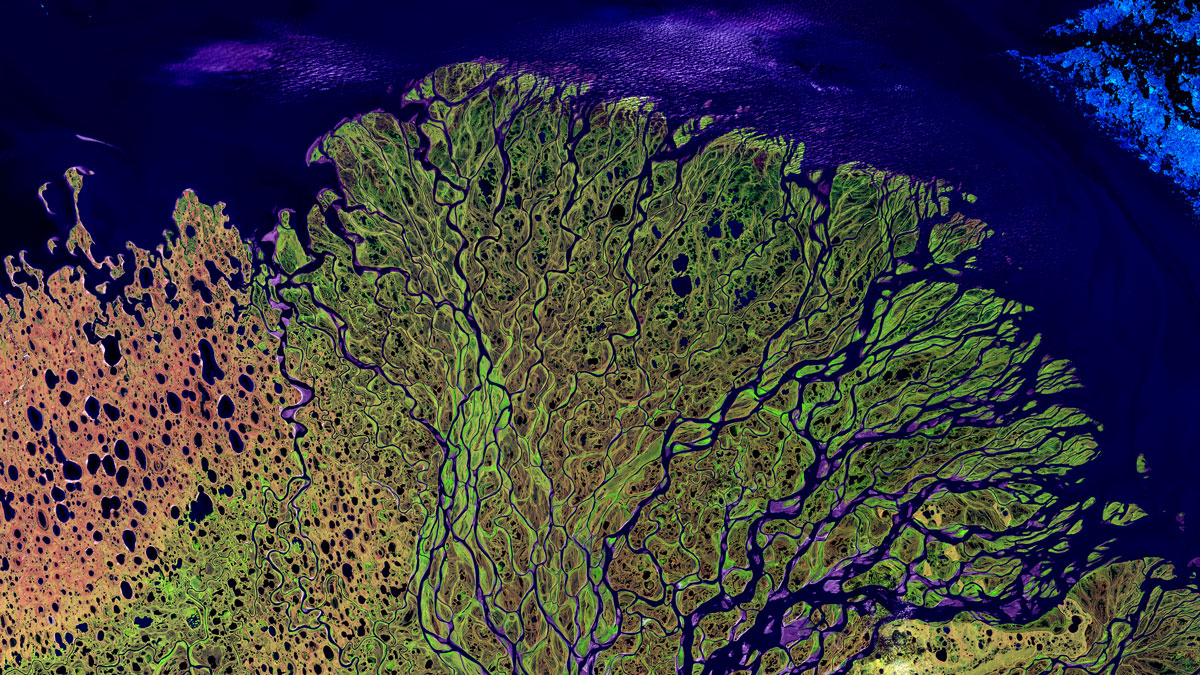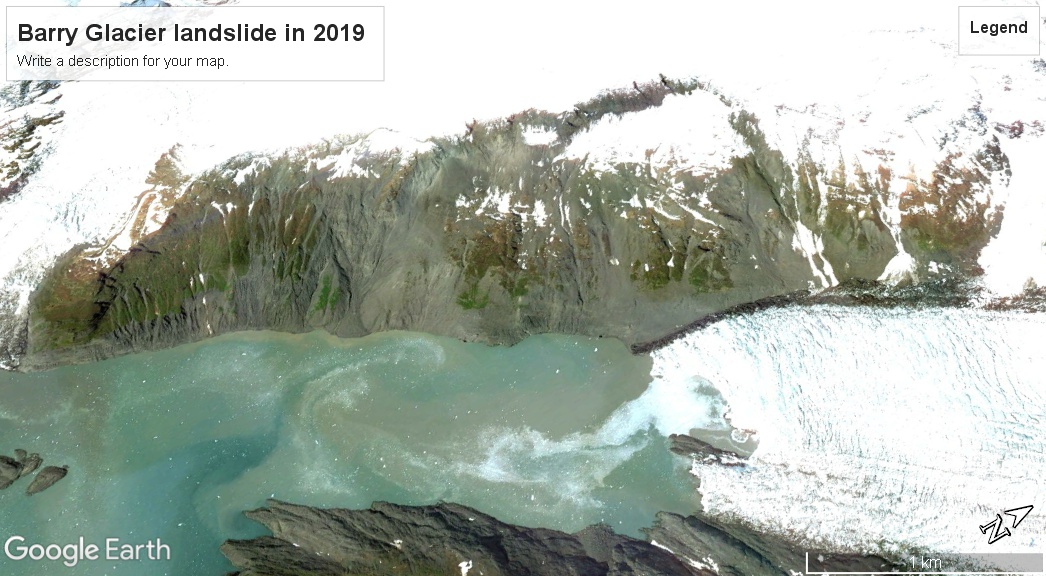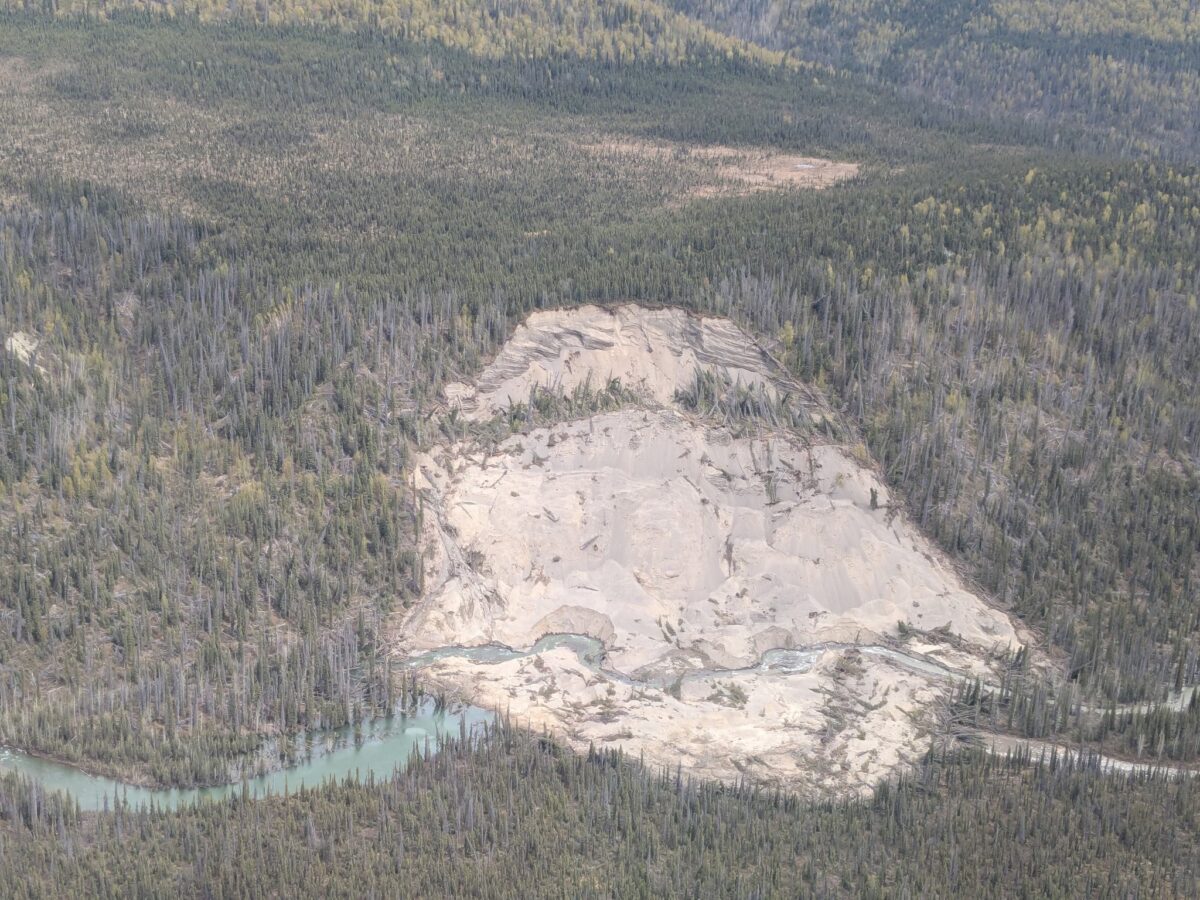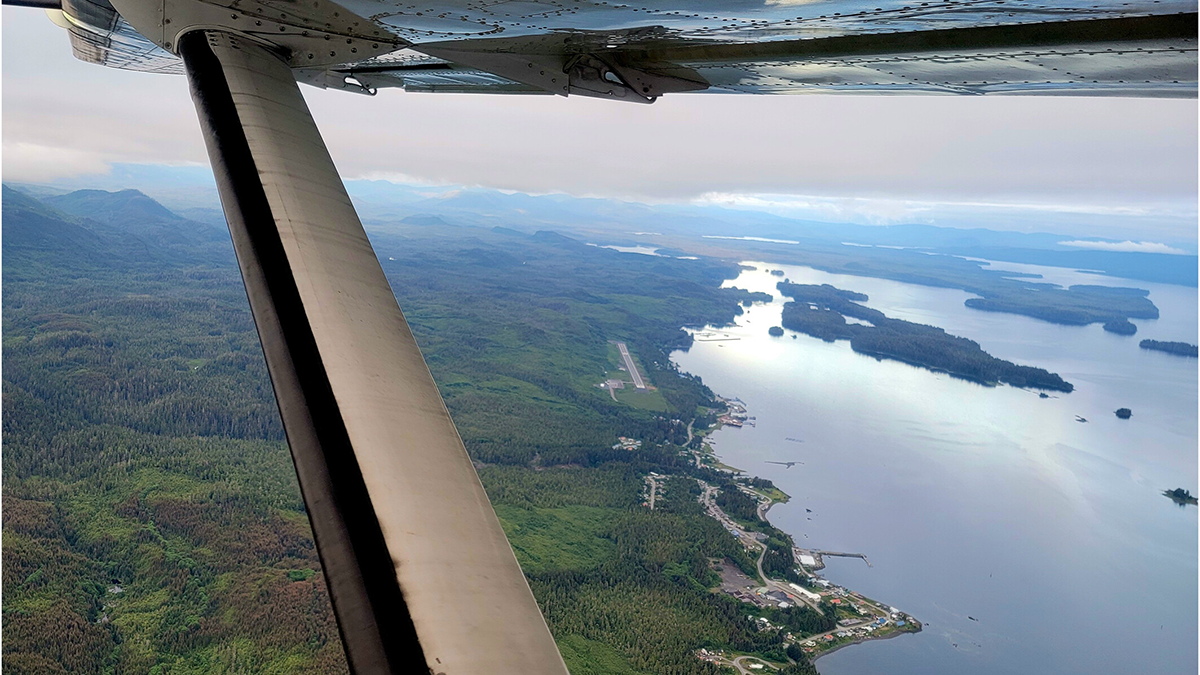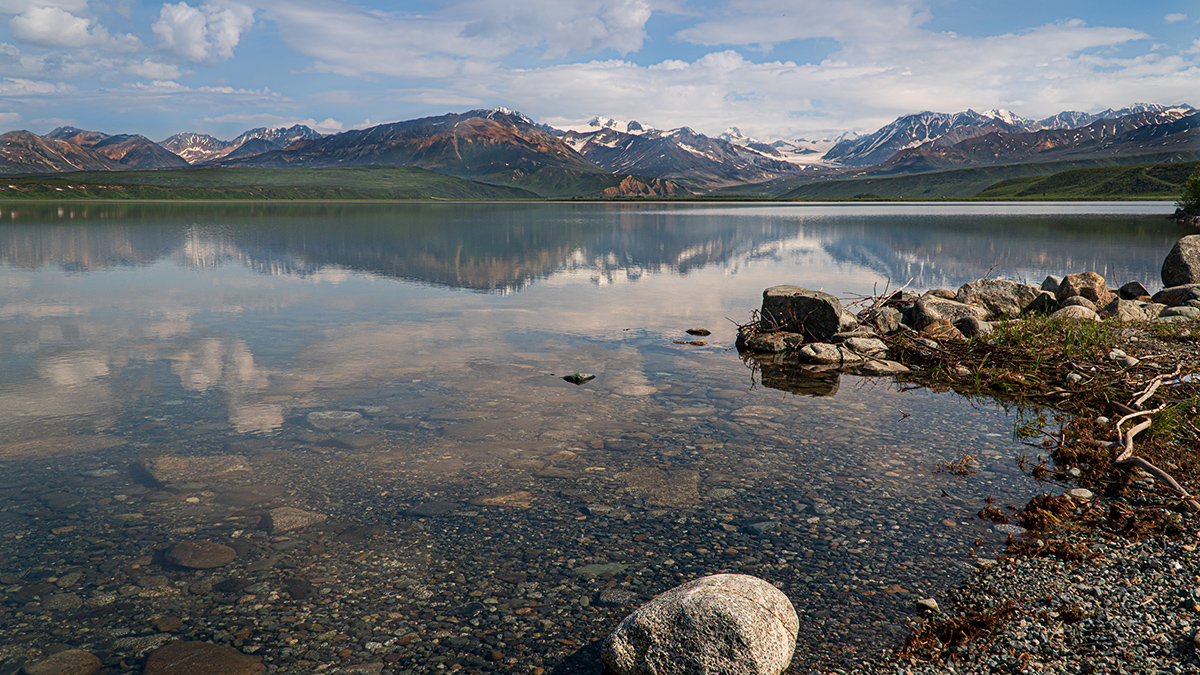The Mendenhall River in Juneau, Alaska, reached a record-breaking crest Wednesday morning thanks to a glacial outburst flood (GLOF) from Suicide Basin. At 16.65 feet, the crest exceeded the previous record flood stage of 15.99 feet in 2024.
Alaska
Updates from the Alaska Earthquake Center regarding the 10 August 2025 landslide
The location of this major event has now been identified. It was a major rock slope failure that ran out across the South Sawyer Glacier. The Alaska Earthquake Center has now provided a detailed update about the 10 August 2025 landslide that occurred in the area of Tracy Arm. This work has been led by […]
A likely large, tsunamigenic landslide in Tracy Arm inlet, Alaska on 10 August 2025
Seismic data and eye-witness reports of a displacement wave point to a large landslide at 5:30 am. On 10 August 2025, at 5:30 am local time, the Alaska Earthquake Center detected a seismic signal that was almost certainly generated by a landslide. They have posted the record of the seismic signal to Twitter. Their posting […]
Arctic Rivers Trade Inorganic Nitrogen for Organic
Climate change is shifting the makeup of a key nutrient in rivers across Russia, Alaska, and Canada, with the potential for ecosystem-wide impacts.
Landslides during periods of glacial retreat in Alaska
An excellent new paper (Walden et al. 2025) examines the occurrence of accelerated movement in rock slope landslides in Alaska as adjacent glaciers melt. The exceptional temperatures in recent days in both North America and Europe has once again highlighted the rate at which the climate is changing in response to anthropogenic increases in greenhouse […]
A landslide on the Lakina River in Alaska
A recent Facebook post has highlighted a reasonably large slump landslide in a remote area of Alaska. Satellite images suggest that this occurred in late October or early November 2024. Loyal reader Andrew McNown kindly highlighted a recent Facebook post that provided some images of a landslide that has partially blocked the Lakina River in […]
As Climate Changes, So Do Gardens Across the United States
Warmer winter temperatures have altered frost patterns and growing seasons across the United States, forcing botanical gardens and arboretums to adapt.
Work with Indigenous Communities Advances Community Science
Drawing from climate co-production work with the community of Kake in Alaska, two new studies offer insights for doing community science—especially, but not only, with Indigenous communities.
Los lagos y estanques de Alaska revelan los efectos del derretimiento del permafrost
Un nuevo conjunto de datos proporciona un método poderoso para rastrear fácilmente los cambios en el permafrost.
Alaska’s Lakes and Ponds Reveal Effects of Permafrost Thaw
A new dataset provides a powerful method for easily tracking changes in permafrost.

